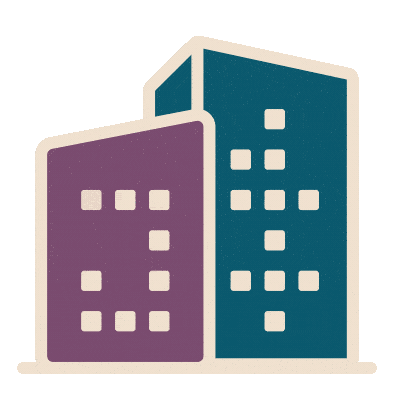WELL AP Ruifeng Zheng: Look at built environments as support systems
Ruifeng Zheng is an Associate Professor at Zhejiang University of Science and Technology, China, Partner at Spain ADA Architecture Design Institute, WELL Faculty and Director of the Healthy Building and Environment Research Center.
Discover how Ruifeng integrates her research and WELL into the living and working environments in her life, and how buildings can help achieve a healthier self while delivering happiness to others.
Bringing WELL into living and working spaces

Building environments have a great impact on human health. They also determine overall health and healthcare levels through personal, genetic and behavioral factors. With the 10 major concepts in WELL v2—Air, Water, Nourishment, Light, Movement, Thermal Comfort, Materials, Sound, Mind, Community and Innovations—we can influence environmental factors that have positive and negative effects on health. In WELL, technical measures can improve health and the environment and are proposed at an item by item basis.
To one degree or another, every factor in the WELL Building Standard can benefit the human body. This includes aspects of the cardiovascular, digestive, endocrine, immune, integumentary, muscular, nervous, reproductive, respiratory, skeletal and urinary systems.
Becoming a WELL AP can provide you with the knowledge and resources needed to implement WELL into our living and working spaces. Preparing for the WELL AP exam is a process of comprehensive and systematic learning that’s based on improving personal preventive health and increasing healthy building professionalism. The personal benefit of obtaining accreditation is a shift from the traditional focus on medical care after disease onset to a focus on preventive methods in daily life to maintain health.
In my own work, becoming a WELL AP will expand my professional knowledge, enabling me to flexibly implement WELL in design work. The WELL AP allows me to provide better services for projects and owners, gaining greater trust from stakeholders and enabling smoother progress for the project. The final design results also provide a healthier and more satisfactory living environment for people.
Informing daily work with WELL Concepts

The concepts in WELL resonate deeply for me, and I bring many of those health measures into my work.
For example, the air concept “A01 Fundamental Air Quality” mentions that “Inhalation exposure to indoor air pollutants can lead to a variety of poor health and well-being outcomes.” It’s extremely important to focus on indoor air quality to minimize the risk to human health. Inhaling indoor air pollutants can lead to short- and long-term effects of varying severity on health. For new indoor spaces, I strictly implement targeted detection of particulate matter, organic gas thresholds, inorganic gas thresholds and radon gas threshold. I also encourage monitoring fundamental air parameters to determine air quality. If there are problems, we employ technologies to actively resolve the potential or apparent problems to provide a healthier indoor environment.
The intention of “V07 Active Furnishings” in the Movement Concept is to discourage prolonged sitting and sedentary behaviors by providing active workstations to as many people as possible. By following this feature, I combine indoor and outdoor furnishings to cultivate an active exercise attitude, encouraging people to take the stairs more and select height-adjustable desks.
“V12 Self-Monitoring” in the Movement Concept focuses on self-monitoring health with wearable fitness trackers. Wearables track physical activities like steps, distance traveled, workout duration and number of stairs. They can also be used to monitor sleep and heart rate. By encouraging the use of wearables, we can help people keep their activity in mind.
“M02 Nature and Place” in the Mind concept states that incorporating natural elements in long-term work and living spaces—like natural wooden floors, wallboards, furniture and naturally green plants—can result in helping people feel relaxed and at peace. Personally, I use hiking during my spare time to achieve this effect, and I joined the International PEACE RUNNING race for peace around the world.
With regard to “T07 Humidity Control” Thermal Comfort, where I live has warm summers, cold winters and one continuous month of rain. Our indoor humidity can get above 90% at times. We used dehumidification and ventilation for 3 hours in the morning and night to control relative humidity. It helps create conditions that are not conducive for microorganisms growth and pests, and it reduces the potential risks to respiratory health.
Exciting health trends in the education and design industry
We can convert building spaces into support systems that increase and improve human and preventive health. In China, health is a requirement in the national strategy and an important aspect in future urban development.
With regard to health, targeted human-centric teaching is included in the course design in education and teaching in high schools. This enables students to have a clearer understanding of the correlation between health and our living environments. Setting up a healthy building as an independent discipline has become an inevitable trend. In the design industry, the focus on style and spatial design is shifting from buildings, equipment, and facilities to human systems and health-based design.
The individual benefits of creating a healthy building environment are easily observed. At the macro level, using strategies to create healthy buildings can decrease the medical expenditure of the entire society. From my perspective, design innovations that favor health can significantly improve work efficiency and encourage a healthy, happy, and energetic environment in work and life.
“The saint does not treat diseases that have occurred but diseases that have not occurred.”
This saying is from the Inner Canon of the Yellow Emperor, a medical classic that was published in the Han Dynasty 2000 years ago. The basic concepts of this book incorporate medical traditions, such as self-learning, to nip something in the bud. It’s the core spirit of disease prevention. This is consistent with the core values of WELL, which shows that personal health, active lifestyle, reduced contact with harmful chemicals and an awareness of active prevention can only benefit our well-being.
Using WELL to make a difference every day
Many of the behaviors and strategies in WELL are simple and easy to apply in life:
Open windows for ventilation: A survey found that the number of people who developed sick building syndrome is greater in buildings with mechanical ventilation systems. Opening windows for ventilation when outdoor air quality is good can ensure fresh indoor air, remove foul smells in the room, and effectively manage indoor air quality.
Good lighting environments: A suitable amount of sunlight can improve immunity. The reason for paying attention and respecting diurnal-nocturnal illumination in the natural environment is that sufficient natural lighting can maintain healthy psychological and physiological states, alleviate work stress, increase work efficiency and maintain a happy mood.
Art therapy space: Incorporating artistic elements in indoor and outdoor spaces, green and blue spaces in closed environments and foreign landscapes will have suggestive and metaphorical effects on psychology. Emotionally, this will provide us with a meaningful leisure atmosphere with nice scenery and a fresh environment that’s completely different from fixed living spaces.
Mental health: Health is a holistic state bringing together the physical, mental, and social aspects of a person. It’s not just the elimination of disease. Therefore, we must pay attention to healthy socializing by participating in different activities. I like to get involved with charitable programs, while also socializing with neighbors and friends to aid in maintaining happiness.
Embracing the Benefits of the WELL AP

For me, the WELL AP has helped me accomplish many personal and professional goals. After obtaining the credential, I was empowered to employ a healthy building system in work and life with the aim of promoting healthy building development.
In my research, I conducted in-depth studies on the responses of buildings to regional climates, focusing on six microclimate environments in the Zhejiang province, and I studied design improvement strategies to adapt to regional climates based on comfort. I have published six high-quality academic theses in China and overseas, and I’ve drafted a research funding application for studying the correlation between thermal comfort buildings and regional climate.
I was also invited to participate in the Consulate General of People’s Republic of China and the national hospital BIM technical application conference to give a talk, sharing my presentation “Healthy Buildings: Building Revolution” based on the healthy hospital topic where I promoted and shared knowledge about WELL.
I participated in drafting the “Healthy low-energy consumption building technical standards” by the China Academy of Building Research where we outlined techniques for implementing healthy buildings and low-energy consumption.
The WELL AP has helped inform and empower my work each and every day. For those who are pursuing the WELL AP now, I hope you achieve a healthy self and can bring happiness to others—that’s the goal for our important work!








